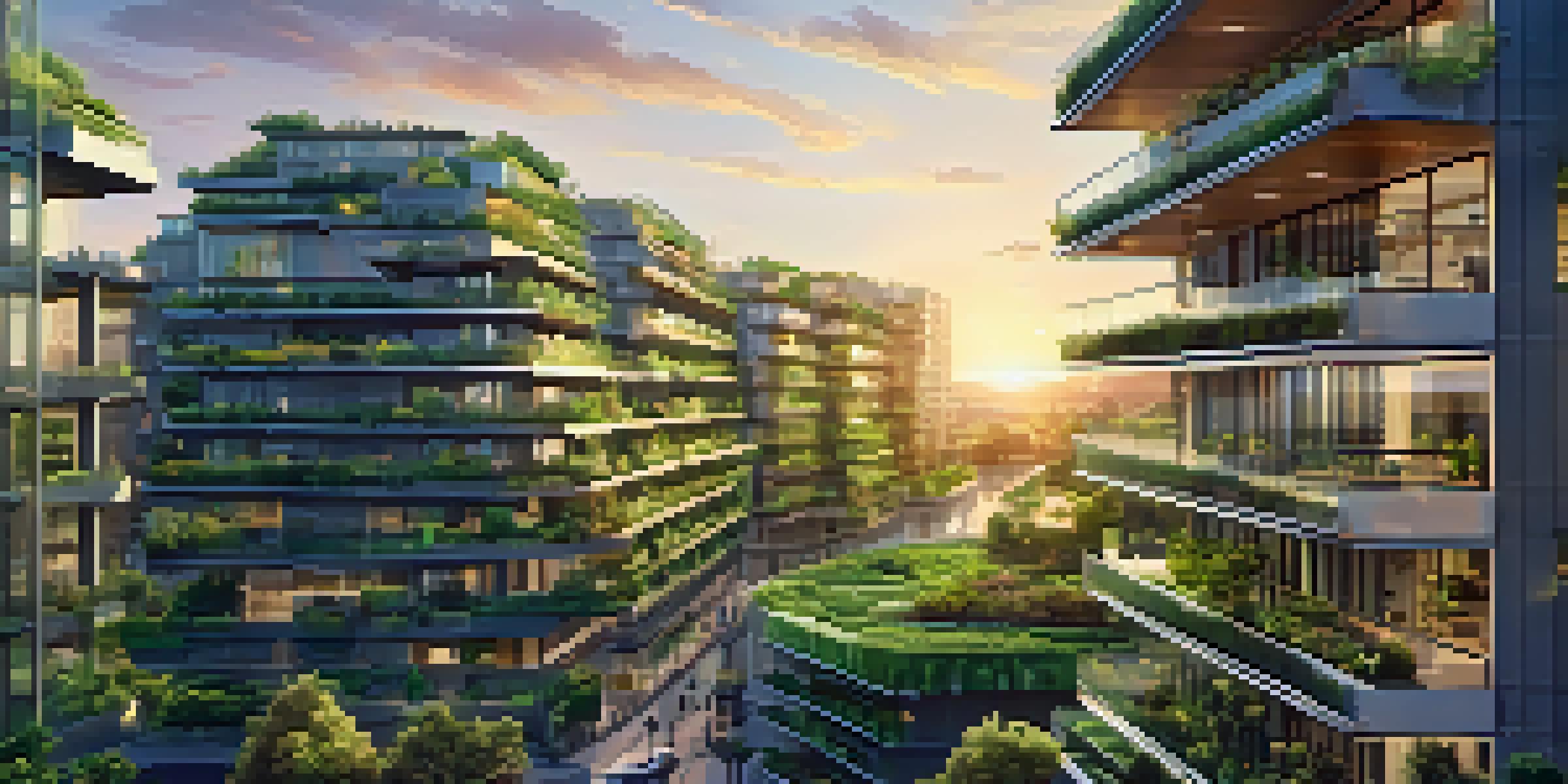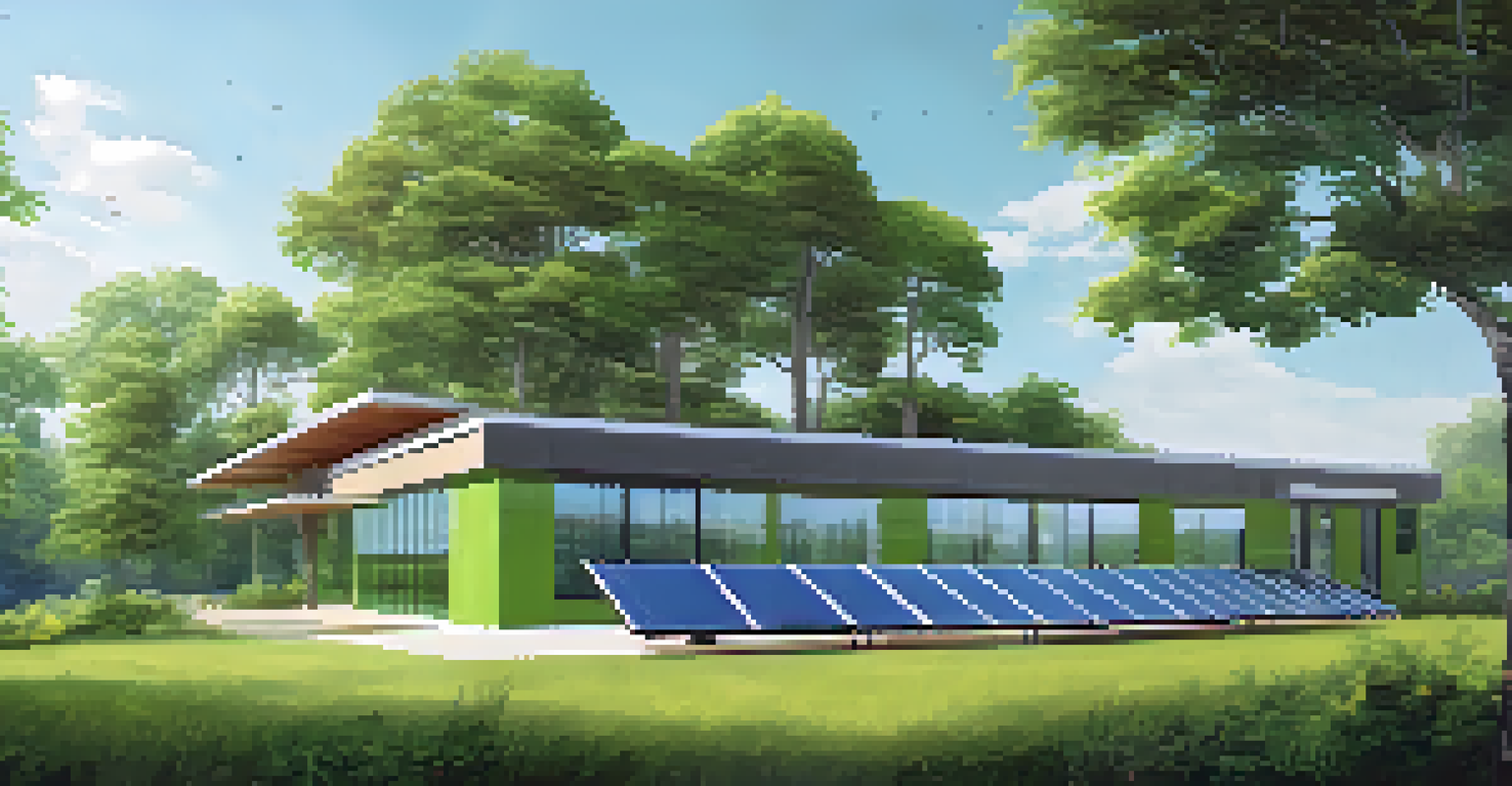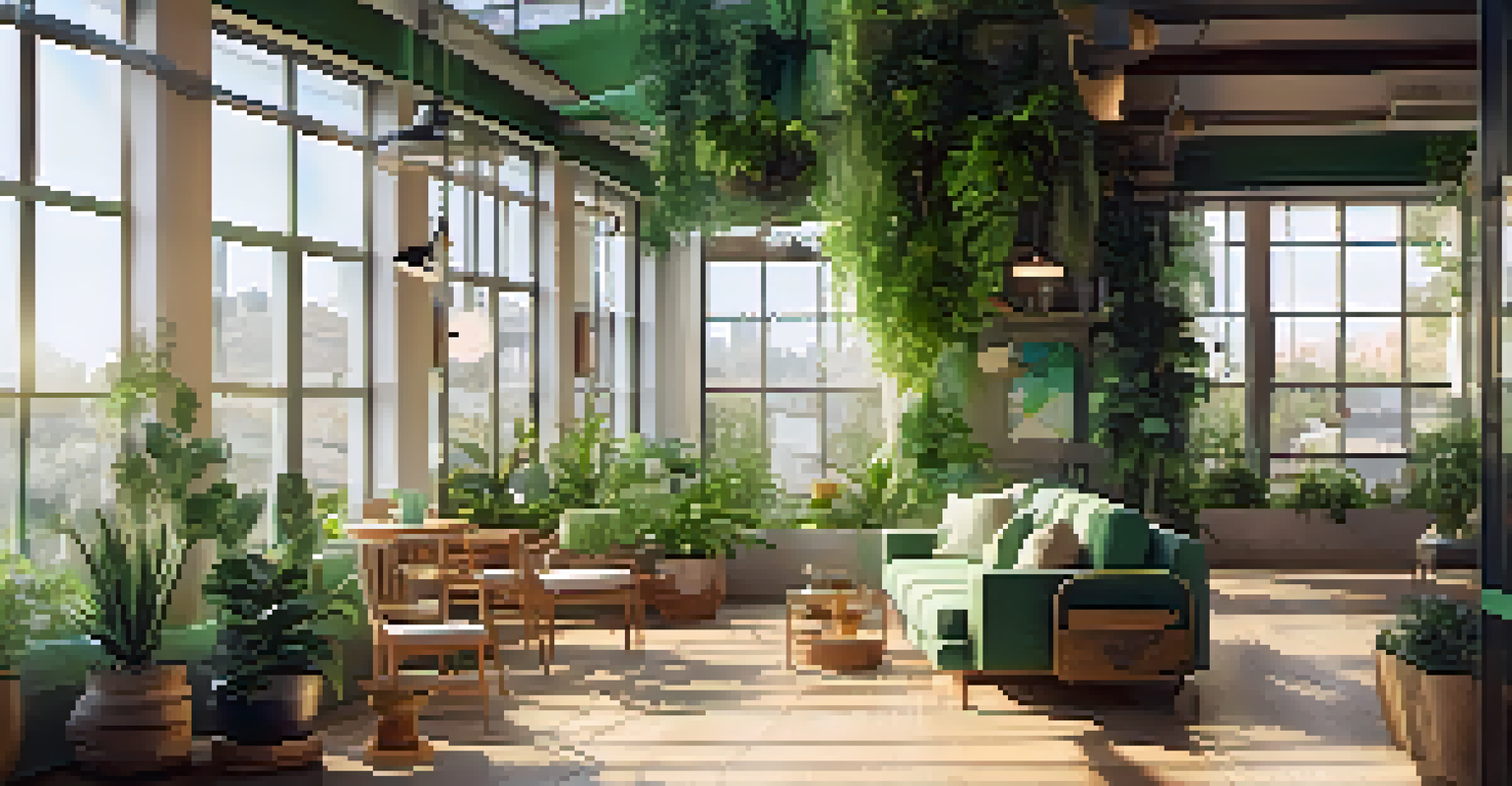Understanding Green Building Practices for Sustainable Cities

What are Green Building Practices?
Green building practices refer to the design, construction, and operation of buildings in an environmentally responsible and resource-efficient manner. This approach focuses on minimizing the negative impacts on the environment throughout a building's lifecycle, from site selection to demolition. Think of it as creating buildings that are not only functional but also harmonious with nature.
The greatest threat to our planet is the belief that someone else will save it.
These practices encompass various strategies, including energy efficiency, water conservation, and the use of sustainable materials. For instance, using reclaimed wood or recycled steel can significantly reduce the carbon footprint of a building. It's about making smart choices that benefit both the environment and the occupants.
Moreover, green buildings often enhance the quality of life for their inhabitants. Features like improved indoor air quality and natural lighting can lead to healthier living spaces, which ultimately contribute to the wellbeing of the community. In essence, green building is as much about people as it is about the planet.
Benefits of Green Building for Cities
Implementing green building practices offers a multitude of benefits for urban areas. One major advantage is the reduction in energy consumption, which can lead to significant cost savings for homeowners and businesses alike. Imagine a city where buildings use solar panels and efficient insulation, drastically cutting down utility bills.

Furthermore, green buildings contribute to improved environmental quality by reducing waste and pollution. They often feature systems that manage stormwater and minimize heat island effects, leading to cooler and cleaner urban spaces. This not only makes cities more livable but also helps combat climate change.
Green Building Benefits Cities
Implementing green building practices significantly reduces energy consumption, enhances environmental quality, and stimulates local economies.
Additionally, promoting green building can stimulate local economies by creating jobs in sustainable construction and maintenance. As cities invest in green infrastructure, they pave the way for innovation and entrepreneurship, fostering a vibrant community focused on sustainability.
Key Elements of Green Building Design
Several key elements define effective green building design, starting with site selection. Choosing locations that minimize environmental disruption and maximize natural resources is crucial. For instance, building on previously developed land can help preserve natural habitats and reduce sprawl.
Sustainability is about ecology, economy, and equity.
Another essential component is energy efficiency. This can be achieved through strategic design choices, such as optimizing orientation for natural light and using high-performance windows. It’s like dressing your building for success, ensuring it performs well in terms of energy use.
Lastly, water conservation practices are vital. Implementing rainwater harvesting systems and using drought-resistant landscaping can significantly decrease water usage. By embracing these elements, cities can create a blueprint for sustainable development that benefits everyone.
Materials Used in Green Building
The choice of materials is a cornerstone of green building. Sustainable materials, like bamboo and recycled products, not only reduce waste but also often require less energy to produce. This is akin to choosing seasonal ingredients for a meal – it's about making smarter, eco-friendly choices.
Additionally, using materials that promote indoor air quality, such as low-VOC (volatile organic compound) paints and finishes, is essential. These materials help create healthier living spaces, reducing the risk of respiratory issues and allergies among occupants. It's about creating a sanctuary that feels good to live in.
Key Elements in Green Design
Effective green building design focuses on site selection, energy efficiency, and water conservation to create sustainable urban environments.
Finally, sourcing materials locally can further enhance sustainability. This practice not only supports the local economy but also reduces transportation emissions. By choosing nearby suppliers, builders can significantly lower the carbon footprint associated with material delivery.
Green Building Certifications and Standards
To ensure buildings meet specific sustainability criteria, various certifications and standards exist. LEED (Leadership in Energy and Environmental Design) is one of the most recognized systems, providing a framework for creating healthy, efficient, and cost-saving green buildings. It's like a badge of honor that says, 'We care about our planet.'
Other certifications include BREEAM (Building Research Establishment Environmental Assessment Method) and the Living Building Challenge, each with its unique focus and requirements. These standards guide builders in making informed decisions that align with environmental goals and societal needs.
Achieving certification can also enhance a building's marketability, attracting eco-conscious buyers and tenants. In a world where sustainability is becoming increasingly important, these certifications provide a competitive edge in the real estate market.
Challenges in Implementing Green Building Practices
Despite the clear benefits, implementing green building practices can come with challenges. One of the main hurdles is the higher upfront costs associated with sustainable materials and technologies. Many people equate green building with luxury, but it doesn't have to be out of reach for everyone.
Additionally, there can be a lack of awareness and understanding about green building options among both builders and buyers. This knowledge gap may hinder the adoption of sustainable practices. Education and outreach are crucial to bridging this divide and showcasing the long-term benefits of green building.
Challenges to Sustainable Practices
Higher upfront costs, lack of awareness, and outdated regulations pose significant challenges to the widespread adoption of green building practices.
Lastly, navigating regulations and building codes can be a complex task. Many regions have outdated codes that don't account for modern green technologies. Advocating for updated regulations can help streamline the process and encourage more builders to embrace sustainability.
The Future of Green Building and Sustainable Cities
As cities continue to grow and evolve, the future of green building looks promising. With increasing awareness about climate change and environmental issues, more stakeholders are recognizing the importance of sustainable practices. It's becoming a priority, not just for builders, but for entire communities.
Technological advancements are also playing a significant role in shaping the future of green building. Innovations in energy efficiency, smart home technologies, and sustainable materials are making it easier to adopt green practices. Imagine a future where every new building is equipped with the latest tech to optimize energy use.

Ultimately, the shift toward sustainable cities will require collaboration among governments, builders, and residents. By working together and embracing green building practices, we can create urban spaces that are not only livable but also thrive harmoniously with nature.